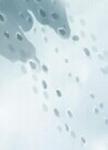版权所有:内蒙古大学图书馆 技术提供:维普资讯• 智图
内蒙古自治区呼和浩特市赛罕区大学西街235号 邮编: 010021

作者机构:Ohio State University ElectroScience Laboratory Department of Electrical and Computer Engineering ColumbusOH43214 United States
出 版 物:《IEEE Antennas and Wireless Propagation Letters》 (IEEE Antennas Wirel. Propag. Lett.)
年 卷 期:2024年第23卷第1期
页 面:424-428页
核心收录:
学科分类:0710[理学-生物学] 0831[工学-生物医学工程(可授工学、理学、医学学位)] 0808[工学-电气工程] 0809[工学-电子科学与技术(可授工学、理学学位)] 0817[工学-化学工程与技术] 0806[工学-冶金工程] 08[工学] 0703[理学-化学] 0836[工学-生物工程] 0811[工学-控制科学与工程]
主 题:Muscle
摘 要:We present a sensor toward wearable monitoring of muscle atrophy with improved stretching capabilities and sensing resolution for practical implementation. The operation relies on our previously reported approach, where wrap-around transmit and receive loops at inductive frequencies monitor changes in muscle size via the magnitude and/or phase of the transmission coefficient. The novel aspects of this work entail: 1) a new fabrication approach with stretchable inductive loops made from Gallium Indium eutectic (EGaIn) injected into silicone tubing to improve stretchability, and 2) operation below the defined resonant frequency to improve magnitude resolution of the sensor. Simulation and in vitro measurement results are in excellent agreement. Compared to our previous sensor implementation, the proposed approach: 1) achieves 4.3 times higher stretchability, 2) measures 1.7 times larger muscle volume loss, and 3) improves magnitude resolution by 6 dB. Specifically, we achieve a magnitude and phase resolution of 1.25 dB and 3.8°, respectively, per centimeter of limb circumference, and 0.3 dB and 0.9° per a 1% volume reduction. We also demonstrate repeatable fabrication with a low standard error of 0.19 dB and 0.7°. Because of the improved stretching capabilities and resolution, we can now accurately measure the circumference at any location on the leg of any given member of the population with a single device. Concurrently, this work brings forward innovations in fabricating radio frequency electronics from liquid metals. © 2023 IEEE.